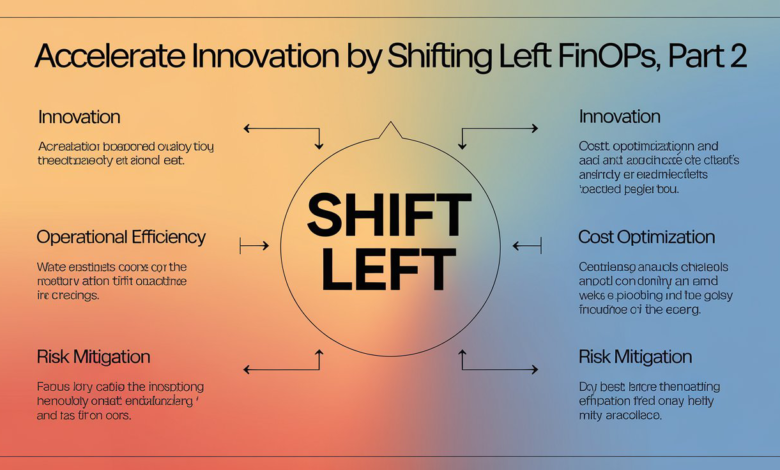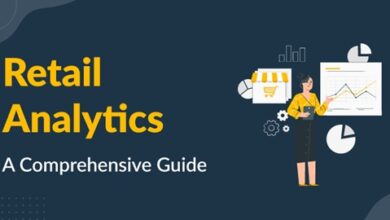Accelerate Innovation by Shifting Left FinOps (Part 2)

Introduction
In Part 1 of this series, we explored the fundamental principles behind FinOps (Financial Operations) and the concept of “shifting left.” We examined how organizations can benefit from integrating financial considerations into earlier stages of the software development lifecycle (SDLC). In this second part, we dive deeper into practical strategies for accelerating innovation by further leveraging the “shift left” FinOps model and look at key practices to enable continuous financial insights in cloud-native environments.
Key aspects of the “Accelerate Innovation by Shifting Left FinOps” series:
| Part | Key Focus | Topics Covered | Takeaway |
|---|---|---|---|
| Part 1 | Introduction to FinOps and Shifting Left | – Definition of FinOps – Importance of financial accountability in cloud usage | Shifting left integrates financial visibility into early development stages. |
| Part 2 | Implementing Shift-Left FinOps to Accelerate Innovation | – Automated cost visibility – CI/CD integration – Cross-functional teams – Governance and policies | Shifting left enables innovation by embedding cost control in the development process. |
| Common Theme | Cloud cost management and optimization | – Cloud cost forecasting – Proactive cost control – Financial collaboration | Align technical decisions with business goals through financial awareness. |
Recap: What is FinOps and Shifting Left?
FinOps is the practice of bringing financial accountability to the variable spend model of cloud computing. It bridges the gap between technical teams (like DevOps) and financial teams by establishing financial discipline, enabling real-time insights into cloud spending, and fostering collaboration to optimize costs without compromising innovation.
Shifting Left, in this context, means moving financial concerns—such as cloud cost management and budgeting—closer to the beginning of the development process. Traditionally, financial oversight has been reactive, dealing with budgets only after cloud infrastructure has been deployed. Shifting left enables proactive cost forecasting and optimization by embedding financial visibility into the development pipeline, allowing organizations to better align their cloud investments with business objectives.
The Importance of Shifting Left in FinOps
In today’s rapidly evolving cloud-native environment, where innovation must happen at speed and scale, waiting until after deployment to assess financial implications can be a significant bottleneck. Here’s why:
Rapid Cloud Adoption and Variable Costs: Cloud services are inherently scalable and provide the ability to expand resources on-demand. But this flexibility can lead to unexpectedly high costs if not managed well. By shifting left, you gain visibility into these costs early in the SDLC, allowing you to innovate without financial surprises.
Fostering a Culture of Financial Awareness: When engineers and developers are more aware of the financial impact of their decisions. Whether they’re choosing a more expensive instance type or deploying a feature that requires excessive data transfer. They can make more informed choices that balance cost with performance.
Accelerating Innovation: FinOps, when shifted left, helps accelerate innovation by ensuring that financial constraints do not become blockers. By managing costs and optimizing resources from the start, teams can experiment. Iterate, and scale faster without worrying about budget blowouts down the line.
Implementing Shift-Left FinOps: Best Practices
To truly accelerate innovation while maintaining cost efficiency, organizations must adopt a few key strategies. These practices ensure that FinOps principles are integrated at each phase of development. Empowering teams to make data-driven decisions that promote sustainable growth.
1. Automated Cost Visibility
One of the most effective ways to shift FinOps left is by providing developers with real-time cost data. Many cloud providers now offer detailed billing and usage insights, which can be integrated directly into development pipelines.
For instance:
Cloud Cost Dashboards: Set up automated dashboards that display cost and usage information at each stage of the development process. This allows developers to see the cost implications of their architectural decisions in real time.
Alerts and Budget Guardrails: By setting automated alerts and budget thresholds, teams can be notified if projected costs exceed predefined limits, preventing cost overruns before they happen.
This automation minimizes the burden on developers to manually track costs while promoting financial accountability throughout the SDLC.
2. FinOps Integrated CI/CD Pipelines
Continuous Integration/Continuous Deployment (CI/CD) pipelines are a key driver of cloud-native innovation, enabling rapid iteration and deployment. By integrating FinOps into CI/CD pipelines, financial insights can be automatically embedded into each code commit, build, and deployment.
Cost Estimation as Code: Similar to infrastructure-as-code (IaC) practices, organizations can integrate cost estimation models into their CI/CD pipelines. Every time a developer commits code, they can get a snapshot of the expected cloud costs for running that new feature or update.
Automated Resource Optimization: Pipeline stages can also include automated checks to optimize resource usage. Such as rightsizing virtual machines or identifying over-provisioned storage. These cost-saving actions can be applied automatically during deployment.
This seamless integration of FinOps into CI/CD allows for a more agile and financially conscious development process.
3. Collaboration Between Finance and Engineering
The success of shifting left FinOps depends on a culture of collaboration between finance, engineering, and operations teams. This collaboration ensures that financial considerations are seen not as a barrier to innovation but as a shared responsibility.
Cross-Functional FinOps Teams: Create FinOps teams that include members from finance, engineering, and DevOps. These teams work together to establish cloud cost models, usage policies, and optimization strategies that align with business goals.
Shared KPIs: Align Key Performance Indicators (KPIs) across teams so that both financial and technical metrics are considered. For example, engineering teams could be measured not only on uptime and performance but also on cost efficiency.
This collaboration fosters a sense of ownership over cloud spending, encouraging innovation within a financially responsible framework.
4. Shift-Left Governance and Policies
While empowering developers with cost visibility and tools is essential, governance plays a critical role in ensuring that innovation and cost control stay balanced.
Cost-Optimized Design Principles: Establish cloud architecture guidelines that include cost considerations. Such as using serverless architectures where possible, employing auto-scaling policies, and leveraging spot instances for non-critical workloads.
Tagging and FinOps Policies: Implement robust tagging policies to track cloud resources and costs accurately. Policies should ensure that all deployed resources are tagged with relevant cost-center information, allowing for easier tracking and accountability.
By shifting left with governance, you ensure that cost awareness is embedded into the DNA of your development process.
Benefits of Shift-Left FinOps for Innovation
When organizations successfully shift left with FinOps, they unlock several benefits that help accelerate innovation:
Informed Decision-Making: Developers and engineers have real-time cost insights, empowering them to make decisions that balance innovation with budgetary constraints.
Faster Iteration: By managing costs early in the process, teams can iterate quickly without fear of financial blowout, allowing for more frequent experimentation.
Financial Accountability: Embedding FinOps into the SDLC ensures that financial concerns are not left to the end. But are instead part of the entire lifecycle, resulting in smoother project delivery.
Scalable Cost Optimization: Automation and integration with CI/CD pipelines enable scalable cost-saving practices that grow with your organization.
Conclusion
Shifting left in FinOps is more than just a financial strategy. It’s a framework that helps accelerate cloud innovation by ensuring that financial awareness is present throughout the development lifecycle. By implementing automated cost visibility, integrating FinOps into CI/CD pipelines, fostering cross-functional collaboration, and adhering to governance best practices, organizations can innovate at speed while maintaining financial discipline.
As cloud adoption continues to rise, the organizations that master FinOps and embed it into their culture will be best positioned to drive sustained growth and competitive advantage in the digital economy.
Also Read This: The 1982 Movie Poltergeist Used Real Skeletons As Props – Tymoff



